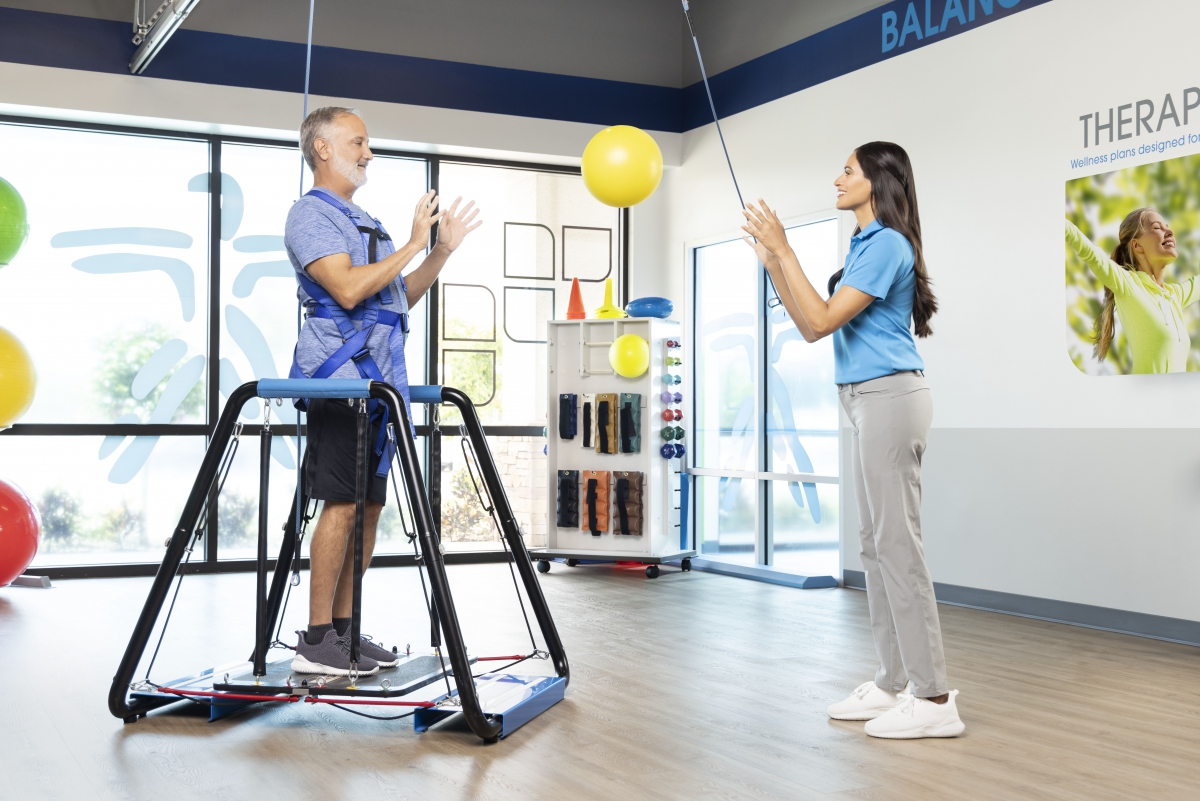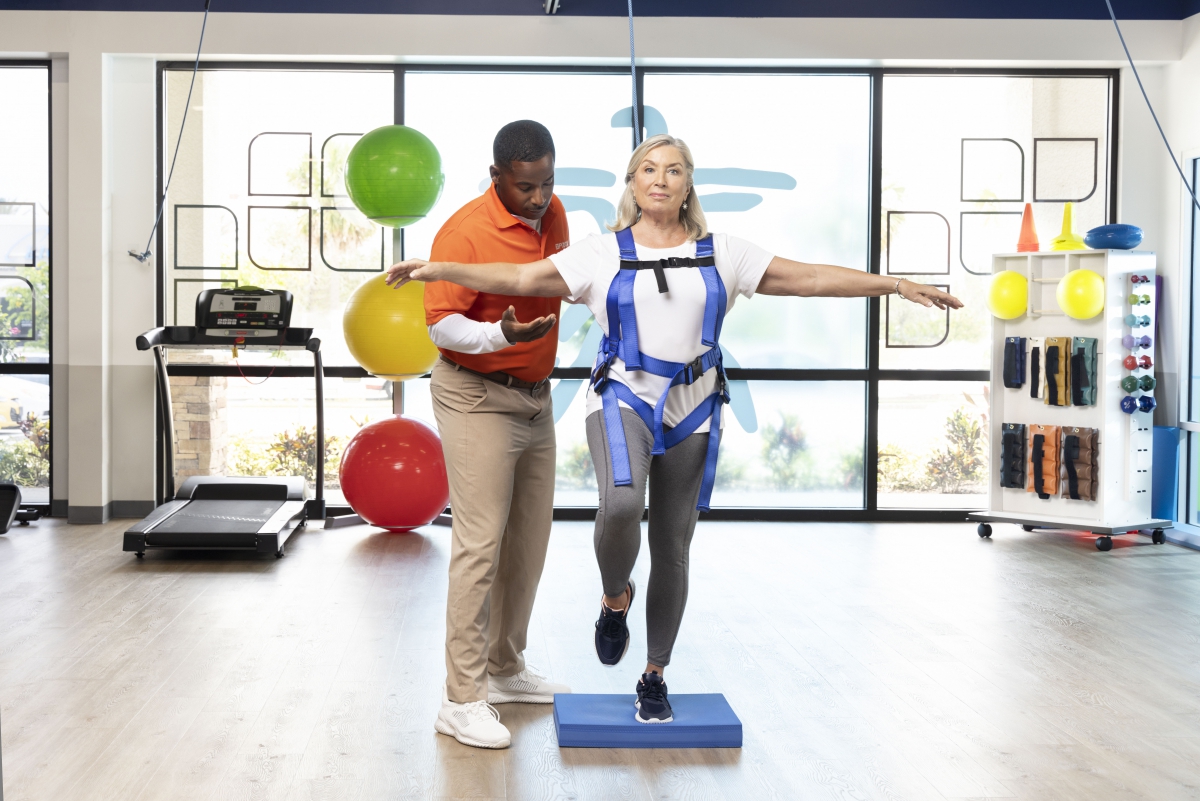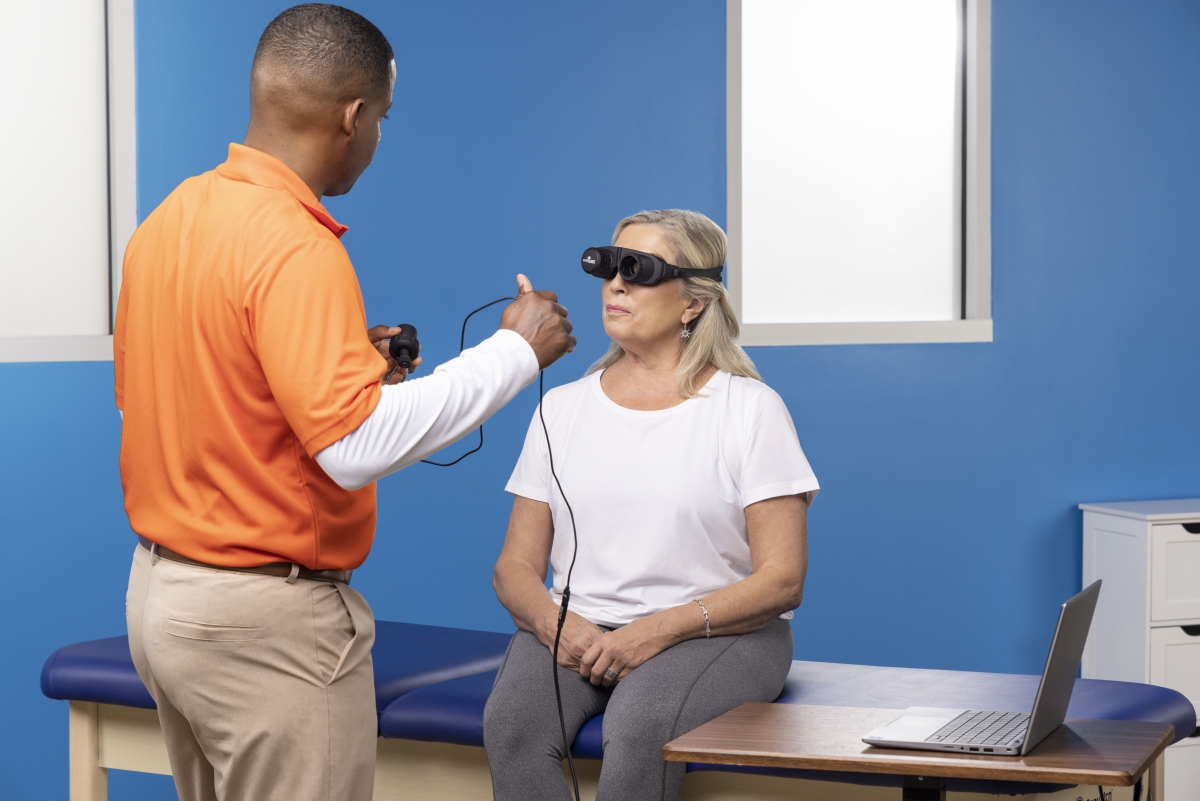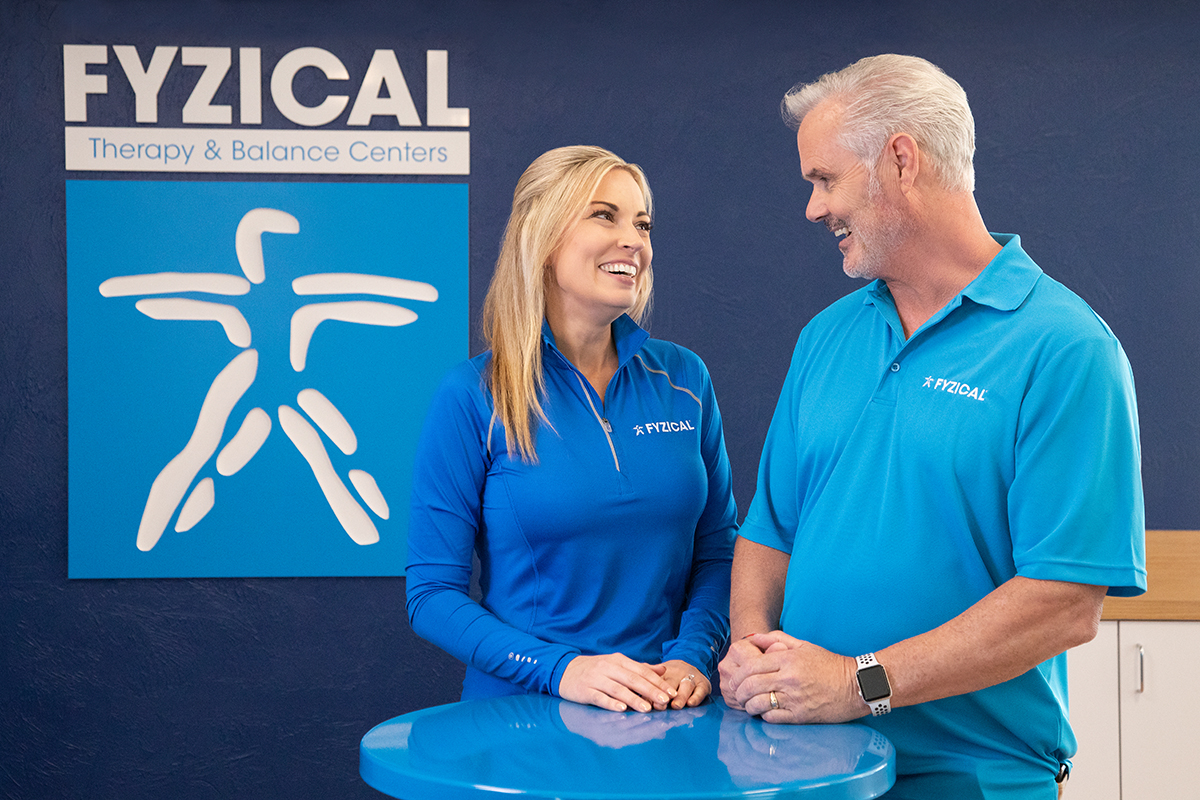Vestibular Rehabilitation
Vestibular Rehabilitation
Vestibular Rehabilitation at FYZICAL Chastain Park, GA
Regain Your Balance, Reduce Dizziness
At FYZICAL Chastain Park, we specialize in Vestibular Rehabilitation Therapy (VRT) to help individuals experiencing dizziness, vertigo, and balance disorders. Our expert therapists use targeted exercises to stimulate the vestibular system, assisting your brain in adjusting to changes in your inner ear and visual fields. This specialized therapy minimizes your risk of falling and enhances your overall quality of life.
Understanding the Vestibular System
How Your Body Maintains Balance
The vestibular system is essential for maintaining balance and spatial orientation. It includes two primary components:
- Central Vestibular System: Located in the brainstem and cerebellum, this system processes signals from the peripheral vestibular system and other sensory inputs like vision and proprioception to regulate your posture and eye movements.
- Peripheral Vestibular System: Located in the inner ear, this system comprises the semicircular canals, utricle, and saccule, which detect head movements and position.
Injuries, infections, age-related changes, or tumors can disrupt the vestibular system, resulting in dizziness, vertigo, and balance issues.

Feeling off balance? Book a free screening today!
What is Vestibular Rehabilitation Therapy (VRT)?
A Specialized Approach to Restoring Balance
Vestibular Rehabilitation Therapy is a specialized program that helps your brain compensate for changes in the inner ear. Through exercises that incorporate sensory inputs from your eyes and muscles, VRT enhances your body’s ability to maintain balance, even when your vestibular system is compromised.

Conditions Treated with Vestibular Rehabilitation
Comprehensive Care for Various Conditions
- Vestibular rehabilitation is highly effective for individuals with the following conditions:
- Benign Paroxysmal Positional Vertigo (BPPV): Sudden dizziness triggered by head movements.
- Inner Ear Issues: Conditions such as vestibular neuritis and labyrinthitis.
- Migraines and Dizziness: Managing dizziness related to migraines.
- Post-Concussion or Traumatic Brain Injury (TBI): Treating dizziness and balance problems after head injuries.
- Neurological Disorders: Addressing balance issues in Parkinson’s disease and multiple sclerosis (MS).
- Neck-Related Dizziness: Alleviating dizziness caused by musculoskeletal problems in the neck.
Seniors at risk of falling can also significantly benefit from vestibular rehabilitation, improving balance and reducing fall risks.

Benefits of Vestibular Rehabilitation
Improve Your Stability and Confidence
The benefits of vestibular rehabilitation are numerous, including:
- Improved Balance and Stability: Strengthen your ability to maintain an upright position.
- Reduced Dizziness and Vertigo: Decrease the frequency and severity of dizziness.
- Enhanced Mobility: Move more freely with increased confidence.
- Increased Independence: Perform daily tasks without fear of falling.
- Enhanced Quality of Life: Enjoy life with greater comfort and confidence.
One-on-One Care, Tailored to You
Focused Attention for Your Recovery
At FYZICAL Chastain Park, we offer personalized, one-on-one care to ensure you receive the attention necessary for optimal recovery. Each treatment plan is custom-designed based on your condition and recovery goals.
Ready for individualized care?
Request an appointment today for expert vestibular rehabilitation therapy.Why Choose FYZICAL Chastain Park?
Expert Care with Advanced Techniques
At FYZICAL Chastain Park, we provide:
- Comprehensive Assessment: Thorough evaluation of your vestibular system and balance.
- Innovative Therapies: Advanced techniques to support your recovery.
- Personalized Plans: Customized care tailored to your specific needs for faster and more effective results.

FAQs:
What is vestibular rehabilitation?
Vestibular rehabilitation is a form of physical therapy that helps individuals with dizziness, vertigo, and balance issues by training the brain to adapt to inner ear dysfunction.
Who needs vestibular rehabilitation?
What should I expect during vestibular rehabilitation?
During your sessions, our therapists will guide you through exercises designed to improve your balance, reduce dizziness, and help your body adapt to changes in the vestibular system.
Vestibular rehabilitation is a form of physical therapy that helps individuals with dizziness, vertigo, and balance issues by training the brain to adapt to inner ear dysfunction.
Who needs vestibular rehabilitation?
People with dizziness, vertigo, balance problems, migraines, or post-concussion symptoms can benefit from vestibular rehab.
How does vestibular rehabilitation work?
It uses customized exercises to retrain the brain and inner ear, improving balance, reducing dizziness, and restoring normal movement.
Is vestibular rehabilitation effective?
Yes, research shows vestibular rehab can significantly reduce dizziness and improve balance and mobility for most patients.
How long does vestibular rehab take?
Treatment length varies but typically lasts 6–8 weeks, depending on the severity of symptoms and patient progress.
What conditions can vestibular rehabilitation help with?
What conditions can vestibular rehabilitation help with?
Conditions like BPPV, migraines, vestibular neuritis, traumatic brain injuries, multiple sclerosis, and neck-related dizziness can all benefit from VRT.
Can vestibular rehab help after a concussion?
Yes, vestibular therapy is highly effective in treating post-concussion dizziness, headaches, and balance issues.
Do I need a doctor’s referral for vestibular rehab?
In most cases, you can start therapy directly, but some insurance plans may require a referral.
What should I expect during vestibular rehabilitation?
During your sessions, our therapists will guide you through exercises designed to improve your balance, reduce dizziness, and help your body adapt to changes in the vestibular system.
Ready to Take Control of Your Recovery?
Take the first step towards a healthier, more balanced life with FYZICAL.
Request an Appointment Now!
Request an Appointment Now!
